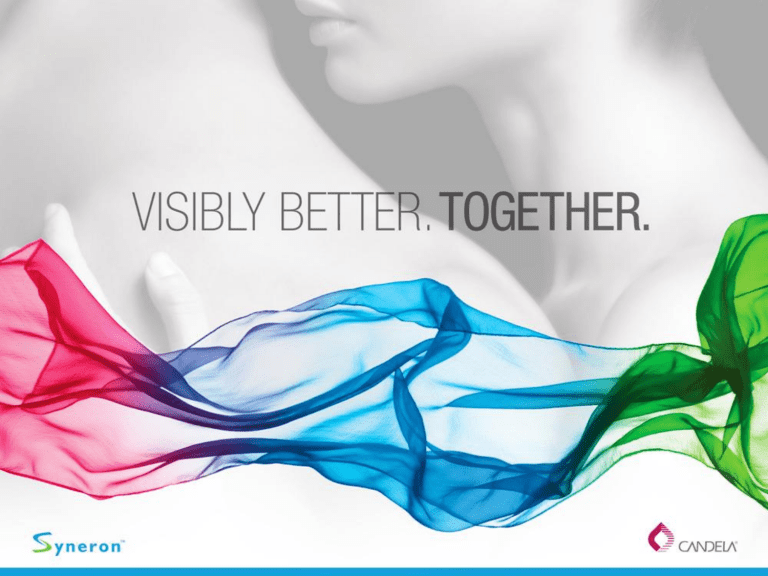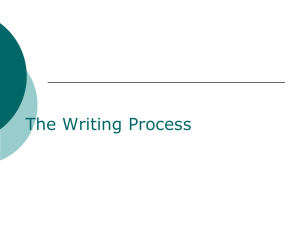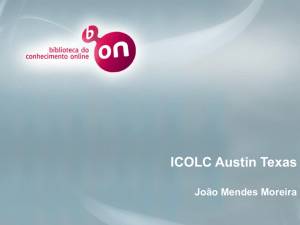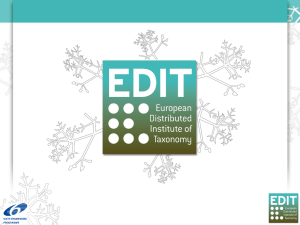quadrolase-ppt

Click to edit Master title style
•
QuadraLASE
– Second level
• Third level
•Surgical Applications
– Fourth level
» Fifth level
QuadraLASE™
• CO2 History
• Fractional Resurfacing
• Patient Consultation
• Pre/Intra/Post Care
Instructions
• Treatment Parameters
• Device Specifications &
Buttonology
• Maintenance
• Ablative Resurfacing
• Surgical Applications
Indications
• Photo-damage
– Wrinkles
– Dyschromia
• Scarring
• Acne Scarring
• Surgical Applications
Click to edit Master title style
• Click to edit Master text styles
– Second level
History
• Third level
– Fourth level
» Fifth level
Brief History of C02
• Developed in 1964
• 10,600nm wavelength is highly absorbed by water
• Ablative!!!
• First CO2 lasers were continuous wave
– Surgical purposes: Cutting & Coagulation
• Eventually became “pulsed”
– Resurfacing
Continued History of CO2
• Physician – Patient Handholding
• DOWNTIME!!!
• High Risk to Benefit Ratio
• CO2 resurfacing complications
– Prolonged Downtime
– Infections/Scarring
– Dyschromia
– ALL are unacceptable to patients
Click to edit Master title style
• Click to edit Master text styles
–
The Science
• Third level
– Fourth level
» Fifth level
What is Fractional Resurfacing?
• Pixilated distribution of laser light
– Scanned pulses are delivered in a Non-
Sequential manner
– Prevents overlap/overheating (RTD)
• Smaller thermal injury areas
– Shorter downtime
– Fewer complications
– Allows for treatment of darker skin types
1540 1540 1540 CO
2 CO
2
CO
2
Necrosis
Coagulation
QuadraSCAN™
• QuadraSCAN technology allows for better patient comfort
– Scanning places laser pulses in 2 adjacent spots in the longest possible intervals
– Limits heat build up that creates patient discomfort
QuadraSCAN™
• Laser delivers pulses in 4 independent quadrants
– Allows maximum time for thermal cooling of the tissue, less pain for the patient and faster recovery
• Delivers uniform tissue ablation to the dermis causing contraction and tissue tightening
• Thermal injury also stimulates the production of new collagen
Delivery of Pulses
• Continuous Wave
– "CW" refers to a laser which produces a continuous output beam, sometimes referred to as 'free-running'
• SuperPulse
– A very brief, high-power energy laser pulse
• QuadraLASE Fractional
– Is continuous wave that is “chopped” by a fanlike device and scanned to produce a fractional array of
5-40% coverage (density)
Types of Pulses
Why Shorter Downtime?
• Only a small percentage
(20-40%) of tissue is ablated (micro thermal zones - MTZ)
• Remaining epithelium is undamaged and intact thus facilitates quicker healing and shorter downtime
Click to edit Master title style
• Click to edit Master text styles
– Second level
In Practice
• Third level
– Fourth level
» Fifth level
QuadraLASE™
• Should ONLY be performed by a Physician
• This is NOT a NO DOWNTIME treatment
Patient Consultation
• Explain entire process to patient
– Will require, at least, 5-10 days of downtime
– Number & Frequency of treatments required
• Set realistic expectations
– Does not replace surgical procedures
• Discuss Contra-indications
Contra-indications
• Cease the use of
Accutane (12 months)
• Tendency to Keloid
• Injectibles/Fillers
– Botox can be injected post treatment/Fillers two weeks post final treatment
• Recent/Planned Sun
Exposure
• Avoid Pregnancy and
Breast feeding
• Active Skin Infections
• Vitaligo
• Unrealistic Patient
Expectations
Click to edit Master title style
• Click to edit Master text styles
–
Treatment Considerations
• Third level
– Fourth level
» Fifth level
Pre-Treatment
• Consent form should be obtained from patient
– Note: If sedation is being utilized, patient should sign the day prior to administration
• Prophylactics
– Anti-viral and Anti-biotic as needed and prior to treatment
– Hydro-quinone (bleaching cream) as needed and recommended for ALL darker skin types
• Topical Anesthetic/Local or Regional Blocks
• Cleanse area to be treated with soap and water
– No drying cleansers (alcohol)
Intra-Treatment
• Select and Calibrate Appropriate Treatment
Parameters
• Protect Un-treated areas with moist/wet gauze or towels
• If treating inside the orbital rim, utilize corneal shields
• Stretch skin with non-dominant hand
• Utilize a smoke evacuator
Clinical Endpoints
• Pixilated Frosting of the skin
• Erythema
• Edema
Potential Hazards
• Reflective/Metal Objects
– Jewelry
– Mirrors
• “Matted” Instruments
• No Flammable Anesthetics and/or Disinfectants
• Plume may contain viable particulates. The use of a smoke evacuator is highly recommended
• Protect the Hair!!!
Post-Treatment
• Keep area clean and moist
• Thin layer of petroleum based ointment may be applied
• Cool Compresses, if necessary
• HYDRATE!!!
• Patients should try to sleep in a semirecumbent position to limit edema
• Sunscreen (30+ SPF)
Transient Side Effects
• Epidermal Bronzing
• HSV breakout
• Acne flares
• Petechiae
• Prolonged Edema/Erythema
• Post Inflammatory Hyper-pigmentation (PIH)
Click to edit Master title style
• Click to edit Master text styles
–
Post Treatment Progression
• Third level
– Fourth level
» Fifth level
Post-Treatment Progression #1
Post-Treatment Progression #2
Post-Treatment Progression #3
Click to edit Master title style
• Click to edit Master text styles
– Second level
Parameters
• Third level
– Fourth level
» Fifth level
Hand Pieces
300µ QS HP 180µ QD HP
Hand Pieces
180µ QD
300µ QS
QS Vs QD
QS Vs QD
• 300µ QS Hand Piece
– Laser pulse is .3 mm in diameter
– Can be used for both
Fractional and Ablative resurfacing
• 180µ QD Hand Piece
– Laser pulse is .18 mm in diameter
– Can ONLY be used for
Fractional resurfacing
**Spot Size must be entered manually. Device will not recognize attached hand piece**
Exposure Control
• “S” = Single Scanned Pulse
– Activates a single laser scan emission towards the patient.
Emission will stop automatically upon completion of the scan or when the footswitch is released. To Activate Another scan, press the footswitch
• “R” = Repeat
– Activates a series of laser scan emissions towards the patient. There is a fixed pause of 1000msec between each scan. Emission stops when the footswitch is released.
• “B” = Beam
– When “B” is selected and confirmed, the display returns to the standard operative screen.
Shape of Treatment Area
QL
Shape Size Scale
• Area of treatment
– 300µm:
• Ranges from 6x6mm to 20x20mm
• Adjusts in increments of 2mm
– 180µm:
• Ranges from 4x4mm to 12x12mm
• Adjusts in increments of 1mm
Density Value (D%)
• Indicates the percentage of area covered during scanning
• Can be set to the following values:
– 5, 10, 15, 20, 25, 30, 35, 40%
– 100% = Full Ablation
Watts/Pulse Duration
• Watts (Energy)
– Range of 5 - 30 watts
– Higher Watts = Deeper Treatment
• Pulse Duration (Time on Tissue)
– Range of 2.5ms – 16ms
– Longer Pulse Duration = More coagulation/hemostasis
Treatment Considerations
QS-300µ Hand Piece
Watts
Pulse
Duration
Coverage
Depth*
Light Moderate Aggressive
8 12 15
3.5
3.5
3.5
20% 20% 20%
80-160
µ
100-200
µ
150-250
µ
*The above table provides THEORETICAL tissue removal depths for a CO2 laser assuming that the target tissue is 70% water. Actual results will vary considerably dependant on tissue moisture content and other factors. Drier tissue will yield deeper penetration/ablation; highly moisturized tissue will yield less. Consequently, do not use harsh drying cleansers prior to treatment.
Test and observe tissue response for each patient at every treatment. Also, multiple passes appear to be additive.
Treatment Considerations
QD-180µ Hand Piece
Watts
Pulse
Duration
Coverage
Depth*
Light
8
Moderate
12
Aggressive
15
3.5
3.5
3.5
20% 20% 20%
200-300 µ 300-400 µ 500-650 µ
*The above table provides THEORETICAL tissue removal depths for a CO2 laser assuming that the target tissue is 70% water.
Actual results will vary considerably dependant on tissue moisture content and other factors. Drier tissue will yield deeper penetration/ablation; highly moisturized tissue will yield less. Consequently, do not use harsh drying cleansers prior to treatment.
Test and observe tissue response for each patient at every treatment. Also, multiple passes appear to be additive.
Treatment Considerations
• ONLY USE RECOMMENDED PARAMETERS
• Recommend against treating outside recommended settings
• Recommended settings are within the
SWEET SPOT
Depth of Penetration
• In the beginning….
– How deep could you go?
– Anything over 900µ is trouble
• Current Thinking…
– 450µ - 650µ will get you what you need for wrinkles
– 300µ QS HP won’t get you there
Aiming Beam
• Fractional Re-surfacing
– Aiming beam is a dotted square
• Ablative Re-surfacing
– Aiming beam is full square
Click to edit Master title style
• Click to edit Master text styles
–
Specifications & Buttonology
• Third level
– Fourth level
» Fifth level
Specifications
QuadraLASE Specifications
Laser Type C02 (Sealed-off and DC excited)
Wavelength 10600 nm
Maximum Power 30 Watts
Optical Spot Size 300 microns and 180 micron (fractional)
Coverage:
300 micron continuous
5-40% in Fractional Mode;
100% in Traditional Mode
Aiming Beam
Scan Pattern
Scan Pattern
635 nm, intensity adjustable from screen
Line, Rectangle, Square,
Triangle, Circle and Donut in Traditional mode
Square in Fractional Mode
6x6 mm to 20x20 mm in increments of 2mm
Specifications
QuadraLASE Specifications (cont.)
Pulse Duration Traditional Mode: .1 to .8 ms in increments of .1 ms
Fractional Mode: 2.5 ms to 16 ms
Operating Modes Continuous:
Single pulse: 50 – 1000msec
Repeat pulse: 50 – 1000mse
Articulated Arm Maneuverability: 7 axes
Electrical
Working radius: 130cm
Rotation angle: 340 °
100 – 240 V AC
Dimensions
50-60 Hz
Width: 35 cm (13.8 in.)
Depth: 24 cm (9.5 in.)
Height: 100 cm (39.4 in.)
Weight: 30 Kg (66 lb.)
User Interface
Down
Pulse Control
Up
Shape/Diameter
PW/D%/Watts
Enter
Ready/Stand-by
User Interface
• Blinking Icon needs to be entered before moving to the next selection
• REMINDER
–ONLY QL is Fractional
–Other Shapes are True Ablative
Resurfacing
Power Cord
Device Back
Foot Switch Door Interlock
Stabilizing foot
Handle
Scanner Cord
Chopper Cord
Device Back
Arm Storage Clip
Computer Pattern Generator (CPG)
Chopper
Chopper
Chopper/CPG
CPG
Distance Gauges
Click to edit Master title style
• Click to edit Master text styles
– Second level
Maintenance
• Third level
– Fourth level
» Fifth level
Cleaning/Disinfection
• Device may be wiped down with standard disinfectant wipes
• Distance Gauges may be cleaned in all modes, including gas, cold sterilization and autoclaves
• Lenses should be cleaned with ethyl alcohol and lens paper
Trouble Shooting
• Tips can be found in the operator’s manual
Classic Re-surfacing
• Similar Pre-treatment protocols as Fractional
Re-surfacing
• Longer downtime/Greater Wound
Management
Surgical Applications
• Continuous Wave
– Used for Cutting and Coagulation
• SuperPulse
– Limits necrosis of epidermis
• Ablation of:
– SKs
– Skin Tags
Supporting Vendors
• Smoke Evacuators
– Buffalo Filter: www.buffalofilter.com
• Protective Eyewear/Instruments
– NOIR: www.noirlaser.com
– Kentek: www.kentek.com
– Innovative Optics: www.innovativeoptics.com
Click to edit Master title style
• Click to edit Master text styles
– Second level
Thank You
• Third level
– Fourth level
» Fifth level






